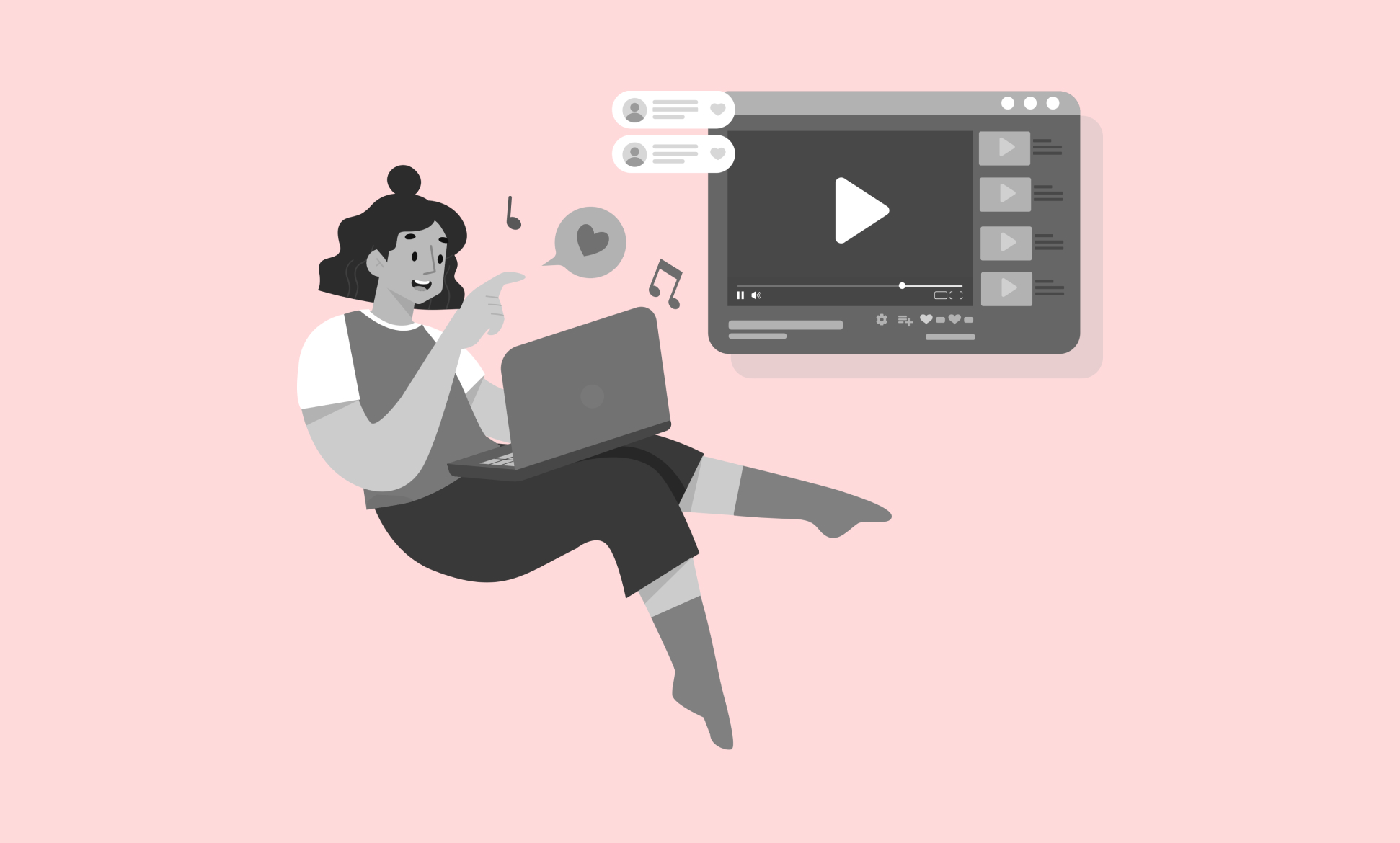From the shifting definition of what a podcast even is to the rise of video consumption and smarter engagement strategies, Podcast Evolutions 2025 was packed with insights that signal where the industry is headed next.
This year, the Quill and CoHost team had the pleasure of connecting with many creators, brands, and podcast industry pros alike. After sitting in on some inspiring panels are conversations, here are our top takeaways:

How to tell if your podcast audience is engaged
What do high download numbers really mean if listeners don’t make it past the halfway point of your episodes? Or if your subscriber count looks impressive, but no one’s actually pressing play?
At Evolutions, industry leaders Fatima Zaidi (CoHost and Quill), Sharon Taylor (Triton Digital), James Cridland (Podnews), and Steve Pratt (The Creativity Business) joined forces during “Becoming Binge-Worthy: How to Tell If Your Audience Is Engaged.” to discuss how to determine if your content is resonating with your ideal listeners.
To find out, these are the key metrics brands and creators should be paying attention to:
- Consumption rate: This tells you how much of your episodes listeners are actually hearing. The closer this number is to 100%, the more likely your content is resonating. If most people are tuning out early, it’s a signal to rework your format or tighten your storytelling.
- Loyal listeners: Track how many listeners come back week after week through episode retention metrics and unique listeners. High return rates are a strong indicator of trust and engagement—and they often lead to better word-of-mouth and organic growth.
- Cost of listener attention: Consider how much time, effort, and budget it takes to earn and maintain someone’s attention. Are your marketing dollars translating into loyal fans? Or are you spending heavily on attracting people who never stick around?
- Drop-off rate: Pinpoint where in your episodes listeners are dropping off. If there’s a consistent drop point, consider rethinking your episode structure or removing content that doesn’t add value.
Podcast experts report that “video is more important than ever”
Jay Nachlis (Coleman Insights) and Steven Goldstein (Amplifi Media) presented findings from their new report, The State of Video Podcasting 2025. The study, based on a survey of 1,000 U.S. podcast consumers aged 15 to 64, highlights a major behavioral shift: 77% of podcast listeners now toggle between audio and video formats. Only 23% remain strictly audio- or video-only users.
For podcasters and brands, this shift confirms something many have already started to sense—audience behavior is no longer siloed. The idea that listeners are either “audio-first” or “video-first” is increasingly outdated. Instead, consumption is becoming context-driven. People are listening to audio versions while commuting or multitasking and turning to video when they're sitting at home or looking for a more immersive experience.
Notably, this isn’t just a Gen Z trend. While hybrid usage is slightly more common among 15–29-year-olds (83%), it's broadly consistent across age groups.
Podcasting meets television
Another important insight from The State of Video Podcasting 2025 relates to how people are accessing video podcasts on YouTube. Just 18 months ago, most YouTube podcast views happened on smartphones. Computers came next, and Smart TVs lagged well behind.
That’s changed: Smart TV usage has surged and is now tied with computers for second place. This shift suggests podcast viewing is increasingly happening in shared, lean-back environments — think living rooms, not just earbuds or desktops.
For creators, this means considering how their content translates across devices and viewing contexts. For brands, it adds weight to the argument that podcasts can deliver impact well beyond traditional listening environments. A Smart TV audience might be more likely to engage with visual branding, long-form storytelling, or episodic formats designed for co-viewing.
As the lines between audio and video continue to blur, this data reinforces the need for a format-flexible strategy — one that doesn’t just repurpose audio for video but intentionally considers how each format serves different situational consumption preferences.
What is a podcast?
Dan Granger of Oxford Road asked a question that many in the industry have quietly been grappling with: What actually counts as a podcast today?
With the rise of YouTube-first shows, exclusive platform deals, and algorithm-driven content, podcasting is at a pivotal moment. Once known for its open RSS roots and audio-first ethos, the medium now spans everything from long-form interviews on Spotify to video clips on TikTok.
Granger warned that without a clearer definition, the industry risks losing what made podcasting such a unique and powerful channel to begin with. “The stakes are nothing less than the sustainability of the entire channel,” he said.
This conversation isn’t just theoretical. In partnership with Edison Research, Oxford Road surveyed over 4,000 Americans and conducted in-depth interviews with more than 30 podcast executives, creators, and researchers. The results paint a picture of an industry evolving fast — but not always in sync.
Here are a few key insights that stood out:
- Video is now part of the DNA: Over half of respondents said they consider video-only content on YouTube to be a podcast. That number rises with frequency of consumption — meaning the more people engage with podcasts, the more they expect them to be visual.
- Advertisers are hesitant, not because of the audience but because of the metrics: Despite high levels of engagement, podcasting still accounts for less than 1% of U.S. ad spend. The main barrier? Measurement gaps and a lack of consistency in how the medium is defined and tracked.
- Creators are stuck in the middle: Without industry-wide standards, many podcasters are being pushed to adapt their formats and content strategies to platform algorithms rather than focusing on audience connection and storytelling. The result is creative drift — and in some cases, podfade.
- The new age of podcasting: Dan Granger proposes a shared definition of podcasting that balances inclusivity (to reflect how the space is evolving) with clarity (to help advertisers, platforms, and creators align). The goal? Preserve the medium’s original strengths — open distribution, direct connection with listeners, and creative freedom — while building infrastructure that allows for scale and investment.
For podcasters and brands alike, the takeaway is clear: podcasting’s growth depends not just on more shows or more listeners but on building consensus around what the medium is — and what it should be.
Get a pulse on podcasting with the Podnews Report Card
The fourth annual Podnews Report Card was unveiled at Evolutions this year, offering valuable insights directly from the podcast creators who interact with platforms daily. With a larger sample size than previous years, the findings reflect growing trends in platform performance, creator sentiment, and shifting priorities across the industry. Here are the most notable takeaways:
- YouTube is gaining ground—fast: Creators are drawn to the platform’s detailed insights and built-in monetization tools, but many still find the process of listing podcasts complicated. Concerns around its algorithm-driven discovery and closed ecosystem also persist.
- Apple retains the top spot — but not without criticism: Apple Podcasts remains the overall favorite podcast app among creators, thanks to strong performance in app experience and creator relations. Still, recurring complaints surfaced — especially around limited control over reviews, high premium subscription fees, and an apparent bias toward promoting bigger shows.
- Data remains fragmented and confusing: A consistent pain point for creators is the lack of standardized analytics. With major platforms like Apple, Spotify, and YouTube each reporting metrics differently — and none fully IAB-compliant — creators are left trying to reconcile incompatible data sources.
Until next year, Evolutions!
Podcast Evolutions 2025 made one thing clear: the podcasting landscape is evolving faster than ever, and with it, are the expectations for both creators and brands. From redefining what a podcast actually is to understanding how and where audiences are engaging, this year’s conversations were a reminder that staying ahead means staying curious.
Whether you're adapting your content for Smart TVs, analyzing drop-off rates, or rethinking your engagement strategy beyond downloads, there’s never been a better time to experiment, learn, and grow.
For more podcast insights like these, subscribe to our biweekly newsletter, Tuned In.




.webp)





